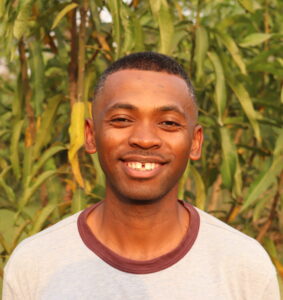Hey there, it’s me, Julio, the EDGE Fellow known as the Lemur guy!
In this blog, I will share my experience with the local communities of Tsinjoarivo Ambalaomby Protected Area, located in the landlocked regions of Vakinaratra and Anosibe An’ala, Madagascar. These communities belong to the Merina and Betsimisaraka ethnic groups in the central main island and the eastern part of the protected area, respectively.
The moment I started to work with the communities, they were welcoming, and it felt like I was with friends and old acquaintances.
On my arrival, the NGOs managing the protected area introduced me to the leader of one of the villages and to the guys I would go to work with.
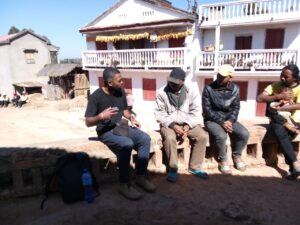
My project focuses on the conservation of the Sibreei’s Dwarf Lemur in Tsinjoarivo Ambalaomby Protected Area. Here, I always say that conservationists like me come and go, but the local communities remain forever. So, working with the community is essential.
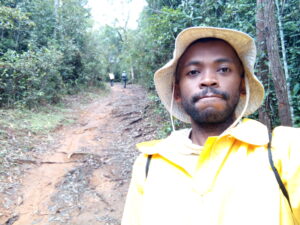
‘Whatever is the manager of this forest is doing? It needs an escalator or zipline!’ Honestly, that was the first line that came to mind as I walked around the protected area.
The thing I appreciated the most during my contact with the community is their warmth. They shared everything with me, especially their ideas. They were expressive and opened up about their feelings, especially regarding conservation and biodiversity. For example, there was a time when we were having difficulties finding Sibreei’s Dwarf Lemur. An old man who lived there happily and enthusiastically shared with me everything he knew about the species and where he had seen it, which was really helpful to us. Some of the local people even asked us to give them feedback on the project when it’s all done.
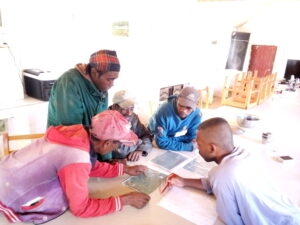
However, not everyone was positive, and the presence of us as ‘conservationists’ was not always welcomed initially. In one instance, some people ran away from us, assuming that we were aliens who were going to kidnap them. In other instances, people avoided talking to us. In one case, a woman was frustrated; the feeling was palpable. She refused to talk and referred us to another person in the community. She felt that I was simply another outsider, there to exploit and take advantage of the community, a situation that is all too common for people living in biodiversity-rich areas. Luckily, those are not our intentions, and our village guide arranged the initial meetings and explained everything to the community, helping to introduce us slowly.
Most local people grow cassava and sweet potatoes. So, they spread the word in the entire community to sell us food and snacks. Of course, our activities in the field required a lot of energy, so we had to eat a wide variety of food to keep our strength up, much to the amusement of the local guides.
The next step of my work with communities is to promote adult education through art and traditional folk music, and raise green awareness. This is not only in the rural communities but also in the urban areas, where people tend to underestimate nature and biodiversity and take these for granted. I believe it is crucial to reconnect people with nature.
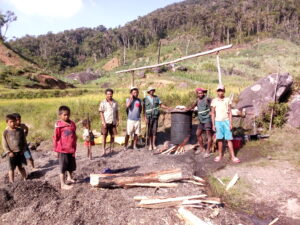
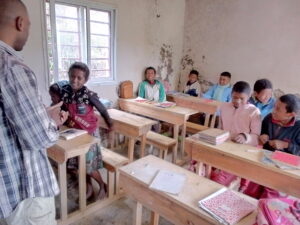
People from the community spoke extensively about their past relationships with conservation and how this had affected their well-being and livelihoods. Many people were furious about the broken promises made by some conservationists, who had made promises to coerce the community into working with them. Generally, people from these communities are very open and friendly, but due to past experiences where conservationists have taken advantage of them and profited from their trust, reconciling these past injustices is challenging and requires considerable time and relationship building. Local people often felt that they were being used and exploited. For example, a local guide told me:
“Conservationists come into our community and ask us for help. When they are done, they do not return, don’t share with us the results of their research or whatever they were doing. They’re just using us as a stepping stone”.
What he’s talking about is his experience where, when conservationists and researchers achieve their goals, they often overlook the source of the data and the people who contributed to it. Understandably frustrating!
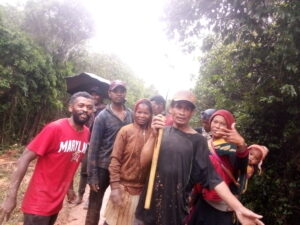
Many people, including my guide, believe that their lifestyles were better in the past when they exploited and used the land freely without restrictions. Some of them are getting frustrated and withdrawing from conservation initiatives and the community associations. My interactions with the local community were brief, but I want to understand and help them. I hope to do that in the future under better circumstances, knowing that for conservation to work in the long run, time, presence, and connection are essential. Working hand-in-hand with the local community is the only way to preserve and promote the prosperity of biodiversity and nature.
Tojo Julio Andriamahefa
2023 EDGE Fellow
